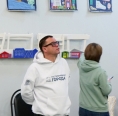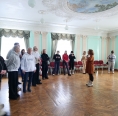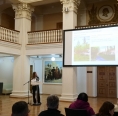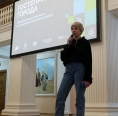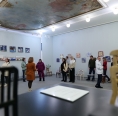-
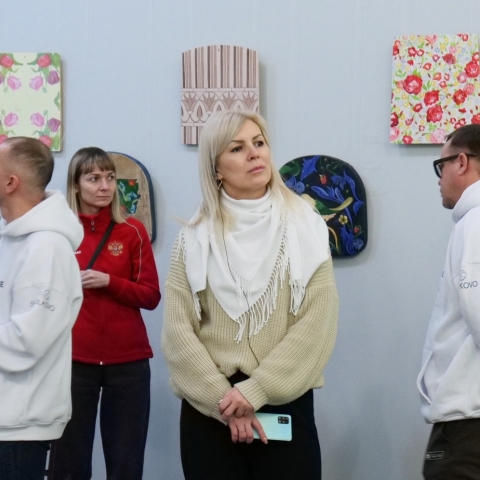
HOSPITABLE CITIES: SATKA
The participants of the general education project Hospitable Cities organized by the Management School of the Skolkovo center, have visited tourist attractions and learned about the tourist potential of Satka District. The visit took place on January 23, with a part of its program associated with Magnezit.
The cycle of meetings and training events dedicated to marketing and promotion of territories was launched the day before in Chelyabinsk. Then, the participants of the program – city mayors and heads of municipalities of Russian regions, their deputies and head of tourism departments came to Satka and visited the Magnezit Museum among their other tours. There they learned about the history of Satka’s backbone company, the main production stages and types of products made. Then they went to various sites on the popular route Russian Magnezit: the viewing platform and the Impuls Calcination Product Complex.
The visitors also met Maria Savostova, Deputy Municipality Head, Maria Dodina, Director of the Satka District Development Assistance Fund, and Yelena Subbotina, the manager of the Art-Satka public art space. The discussions focused on the main tourist attraction locations in our district, joint socio-cultural projects involving Magnezit Group and work to engage the local public in those projects.
Visitors to Art-Satka mentioned the unique educational space of Art-Satka, available to any resident of the town. Project participants wanted to know about the legal form of the art space and the financial and organizational support to it. Visitors from Vyksa came up with the idea to have a joint project with Art Satka.
OUR INFO:
Hospitable Cities is an educational program by VEB.RF state development corporation, the Ministry of Economic Development and the Management School of the Skolkovo center, which was launched in the fall of last year. The participants of the program represent 200 municipalities, including Satka.
The program, aimed to develop the hospitality sector and make cities more attractive to tourists, is designed for a year and consists of five cycles: domestic tourism; urban environment and tourism infrastructures; improving the quality of services; staffing, marketing, and promotion of territories. Following the training, teams will develop their urban tourism ecosystem projects.
Source: Magnezitovets. Photo by: Denis Shakirov
-
26.08 - 26.08
DIARY OF THE THIRD INDUSTRIAL BIENNALE
-
28.11 - 28.11
MY SATKA FESTIVAL WINS THE CONTEST OF CORPORATE VOLUNTEER PROJECTS
-
13.10 - 15.10
COOPERATION WITH VGIBL NAMED AFTER M.I. RUDOMINO

